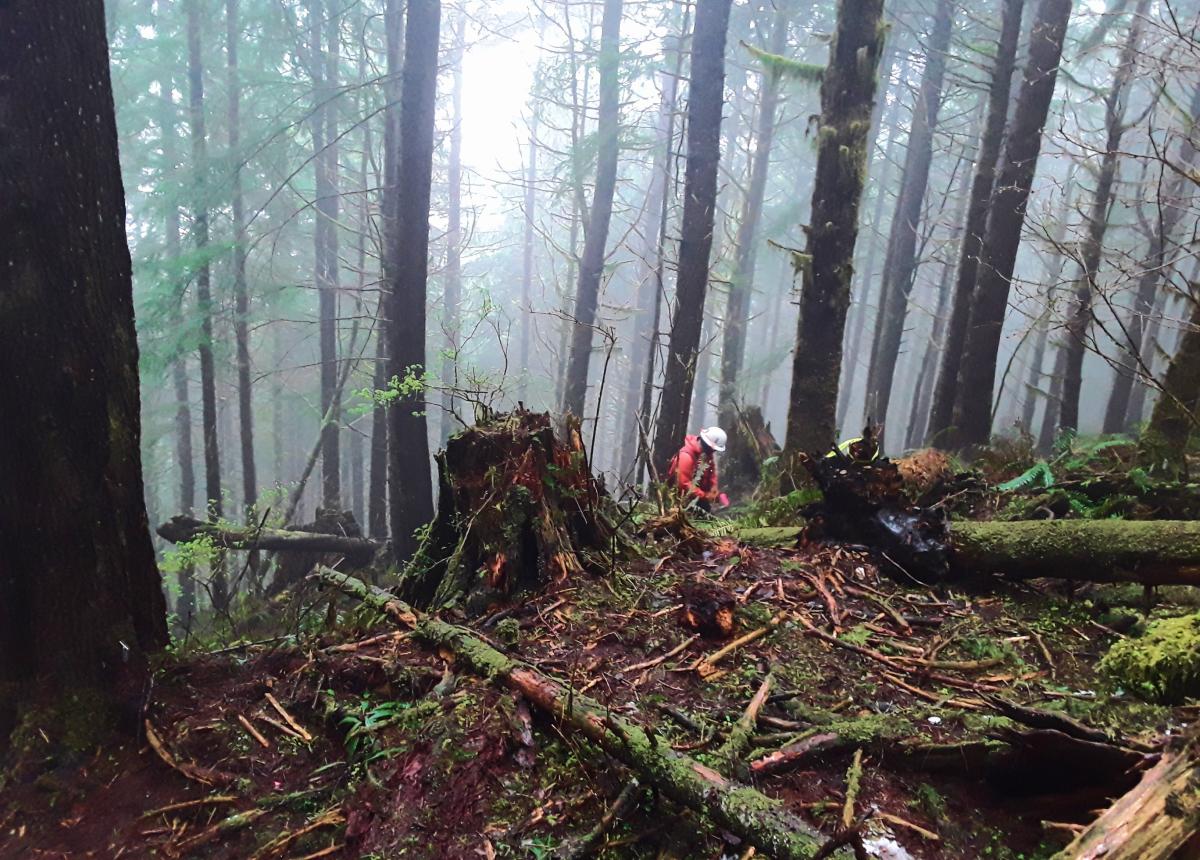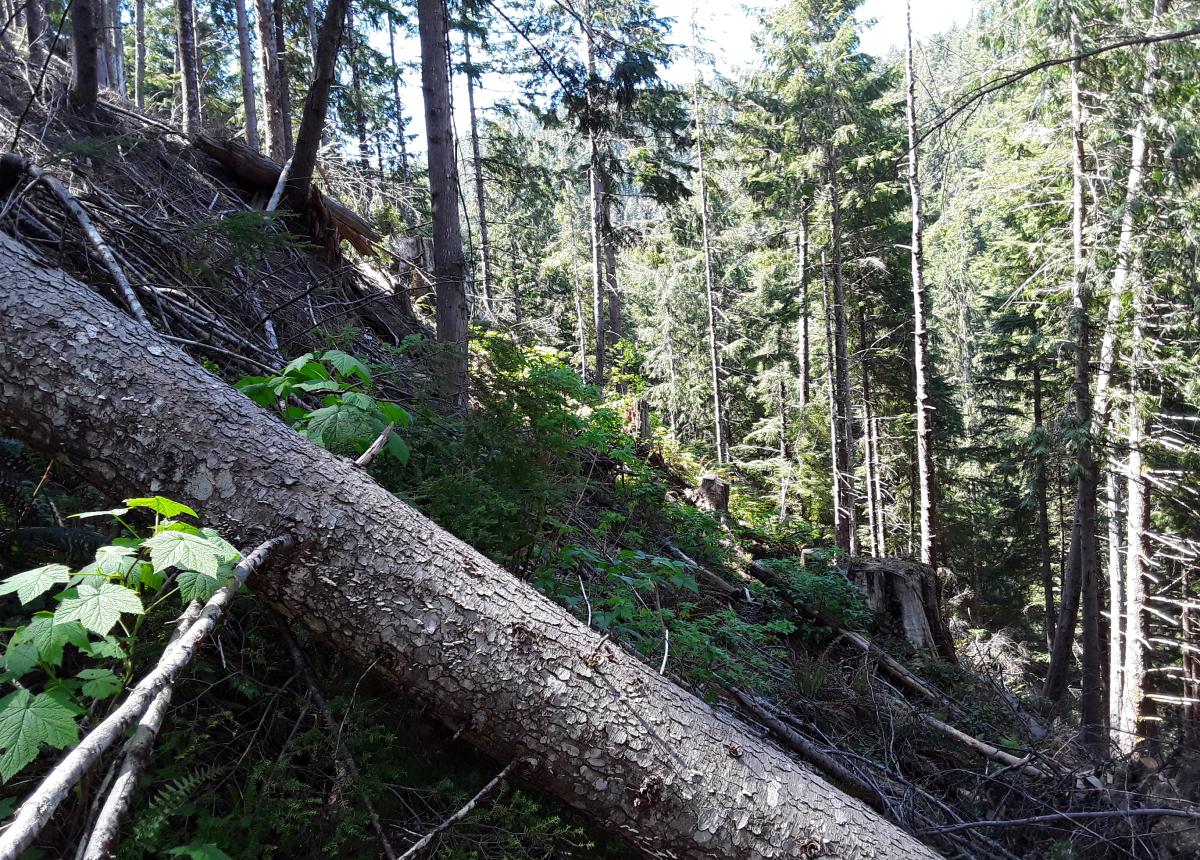Beneath the Canopy
Fri, December 15, 2023

A heavy fog rolls in off the ocean and billows up through the verdant canopy of a steep forest. Swelling over the hillcrest, this moisture condenses on vast sheets of moss draped across tree-sized branches of hemlock, cedar, Douglas fir, and spruce. Much smaller clouds of water vapor rise from our mugs as we park the truck and walk toward tree trunks whose scale makes the truck look like a little toy. As we wander amidst these giants, feeling very small indeed, we alternate between hushed awe and astounded giggles at the diverse magnitude of life in this climax forest. The wonderment of this old-growth stand carries even greater weight for us as our fog-laden visit follows a month spent measuring the young plantation forests of the surrounding hillsides. These comparatively desolate areas are the product of conventional forestry practices that have left virtually all of this region choked with dense, homogeneous stands almost more akin to a cornfield than to the awe-inspiring cathedral of trees and moss we visited.
Out of concern for these forests and a desire to improve the landscape for future generations, The Nature Conservancy purchased this timberland and made it into an experimental forest. It is now a 2,040-hectare laboratory for developing restoration methods to help transition forests from plantations to healthy ecosystems up and down the coast. They want to know whether active management through selective thinning is both efficacious and cost-effective for improving habitat value and ecosystem services of these crowded, homogenous stands. The theory driving this inquiry is that selective thinning can function as a form of disturbance, accelerating successional processes that would otherwise unfold much more slowly.

The study area watershed is split into multiple experimental basins: active treatment, passive treatment, and control. 30% of canopy trees are thinned in the active treatment, creating gaps of various sizes. Standing dead trees and downed wood debris are left on site, and roads are maintained to an appropriate level. Passive treatments are not thinned, and roads are decommissioned. Control basins are not thinned, and roads are maintained to an appropriate level. Understory plants, animals, and microbes, as well as forest structural characteristics such as the abundance and size of trees are measured in each experimental basin. Measuring these variables over an extended timeframe both before and after the thinning is foundational to testing active management as a method of forest restoration.
It has been fascinating to participate in a long-term monitoring project of this nature. The Resilient Forestry field crew spends 8 months of the year working and living in every type of managed forest of the PNW. Seeing so many different iterations of the same forest type, you start to feel the differences; some forests are electrifying while others simply exist. Entering a timber plantation is like stepping into an ecological desert, low light, barren understory, lack of wildlife, and identical trees as far as you can see. In a non-managed forest, when gaps and openings are introduced, life takes off again. Bird diversity increases, small mammals celebrate, new generations of trees are released, and biodiversity flourishes. What The Nature Conservancy is trying to achieve here is truly exciting to us because it’s laying the empirical framework for justifying management that just makes sense to someone who wants to see coastal forests of the PNW resume their place as an integral part of the environment, not a proverbial desert.
